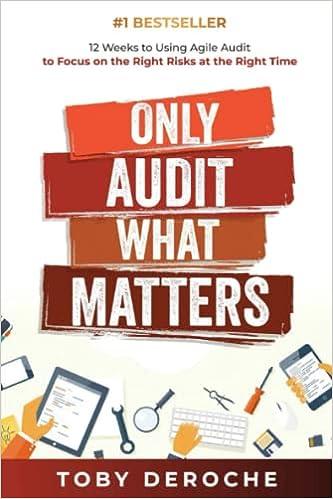




17-22.) Financial Statement Analysis of the Federal Government. (L017-4) The complexity and uniqueness of the federal government makes it difficult to conduct a meaningful analysis of its financial condition. However, conducting a financial statement analysis does provide a better understanding of the federal government. To assist in the financial statement analysis, use Illustrations 17-2 and 17-3 along with the following excerpts from the 2016 Financial Report of the United States Government. (Hint: When using revenues or net costs, use the consolidated amounts, which are adjusted for intra-entity activity.) UNITED STATES GOVERNMENT Statements of Changes in Cash Balance from Unified Budget and Other Activities For the Years Ended September 30, 2016, and 2015 (in billions of dollars) Reclass 2015 2016 Cash flow from unified budget activities Total unified budgetary receipts Total unified budgetary outlays Unified budget deficit 3,248.7 (3,854.1) (3,687.6) 3,266.7 5874 4389) Adjustments for non-cash outlays included in the unified budget Interest accrued on Treasury securities held by the public Agencies year-end credit reform subsidy re-estimates Subsidy expense accrued under direct loan & guarantee programs Subtotal-adjustments for non-cash transactions in unified budget 264.1 (12.7) 11.8 263.2 245.4 26.8 (22.0) 250.2 continued Reclass 2015 2016 Cash flow from activities not included in unified budget Cash flow from non-budget activities Interest paid on Treasury securitles held by the public Other direct loan transactions Repayment of principal on direct loans Other guaranteed loan transactions Miscellaneous liabilities Deposit fund liability balances Seignorage Subtotal-cash flow from non-budget activities (262.7) (80.3) (243.5 (119.9) 17.4 (3633)3154 Cash flow from monetary transactions Loans to the IMF Other monetary assets Special drawing rights Subtotal-cash flow from monetary transactions 0.6 Cash flow from financing Borrowing from the public Repayment of debt held by the public Effect of uninvested principal from the Thrift Savings Plan (TSP) G Fund Agency securities Subtotal-cash flow from financing 8.3904 7.0375 (6,700.6) 203.2 (7,343.3) (203.2) 844.0 540.2 Other Change in cash balance Beginning cash balance Ending cash balance 159.5 305.1 464.6 40.2 264.9 305.1 The accompanying notes are an integral part of these financial statements. Property, Plant, and Equipment As of September 30, 2016 (In billions of dollars) Accumulated Depreciation/ Amortization Cost All All Defense Others DefenseOthers Defense Others Buildings, structures, and facilities Furniture, fixtures, and equipment Construction in progress Land Internal use software Assets under capital lease Leasehold improvements Other property. plant, and equipment 384.1 1,054.5 118.1 275.3230.1 172.7 639.7 N/A 150.8 113.3 N/A 154.0 414.8 59.4 10.7 13.0 13.0 33.1 10.7 3.5 6.0 20.7 1.7 10.4 10.3 10.3 1,588.2 267.6 979.5 Subtotal 298.3 1.174.6 876.3 565.9 2.154.1 Total property, plant, and equipment, net Required a. To provide an indication of the government's financial capability, answer the following: () What percentage of total revenues comes from individual income taxes (2) What is the debt service as calculated by the ratio of principal and o provide an indication of the government's financial performance, answer (1) What is interperiod equity, as calculated by the ratio of revenue to net c. To provide an indication of the government's financial position, answer the and withholdings? interest payments on debt held by the public to total revenue? b. T the following: costs? following: (1) What is the ratio of nondedicated collections funds to total revenue? (2) What is the quick ratio (use known current liabilities in the calculation)? (3) What is the capital asset condition as calculated by the ratio of accu- mulated depreciation to the cost of depreciable capital assets? d. Based on the ratios you have calculated, how would you assess the finan- cial condition of the federal government for FY 2016? (Hint: Chapter 10 may help provide a context/benchmark for the value of some of the ratios you have calculated.) ILLUSTRATION 17-2 UNITED STATES GOVERNMENT Balance Sheets As of September 30, 2016, and 2015 (In billions of dollars) Restated 2015 2016 Assets: Cash and other monetary assets Accounts and taxes receivable, net Loans receivable, net Inventories and related property, net Property, plant and equipment, net Debt and equity securities Investments in government-sponsored enterprises Other assets 305.1 464.6 133.3 1,277.6 314.3 979.5 48.2 108.6 144.4 1,216.0 320.6 925.3 104.4 106.3 165.7 3,261.2 3,470.5 Total assets Stewardship land and heritage assets Liabilities: Accounts payable Federal debt securities held by the public and accrued interest Federal employee and veteran benefits payable Environmental and disposal liabilities Benefits due and payable Insurance and guarantee program liabilities Loan guarantee liabilities Other liabilities 68.3 13,172.5 62.4 14,221.1 7,209.4 446.6 218.2 122.3 18.2 464.7 22,762.9 6,772.4 411.6 213.9 170.3 36.3 659.5 21,504.8 Total liabilities Contingencies and Commitments Net Position: Funds from Dedicated Collections Funds other than those from Dedicated Collections 3,247.7 (22,666.7) (21,491.3) 19,292.4) (18,243.6) 3,374.3 Total net position Total liabilities and net position 3,470.5 3,261.2 The accompanying notes are an integral part of these financial statements * Described in notes; no amount reported here. ILLUSTRATION 17-3 UNITED STATES GOVERNMENT Statement of Operations and Changes in Net Position For the Year Ended September 30, 2016 (In billions of dollars) Funds other than those from Dedicated Dedicated Collections Collections (Combined) (Combined) Eliminations Consolidated Funds from Revenue: Individual income tax and tax 1,525.5 294.3 42.1 withholdings 1077.7 2,603.2 294.3 100.4 46.9 33.3 21.0 228.0 18.2 Corporation income taxes 58.3 46.9 Excise taxes Unemployment taxes Customs duties Estate and gift taxes Other taxes and receipts Miscellaneous earned revenues Intragovernmental interest Total revenue 33.3 21.0 185.1 15.3 42.9 2.9 102.8 1,331.5 (102.8) (102.8) 2,116.6 3,345.3 Net Cost of Government Operations: Net cost Intragovernmental net cost Intragovernmental interest Total net cost intragovernmental transfers Unmatched transactions and balances Net operating (cost)/revenue Net position, beginning of period (21,491.3) 3,247.7 Prior period adjustments-changes in 1,605.7 8.7 2,798.7 (8.7) 102.8 2,892.8 (409.5) 11.7 (1,174.0) 4,404.4 (102.8) 102.8) 4,404.4 1,614.4 409.5 126.6 (1,047.4) (18,243.6) accounting principles Net operating (cost)/revenue Net position, end of period 126.6 (22,666.7) 3,374.3 (1,047.4) 19,292.4) (1,174.0) The accompanying notes are an integral part of these financial statements











